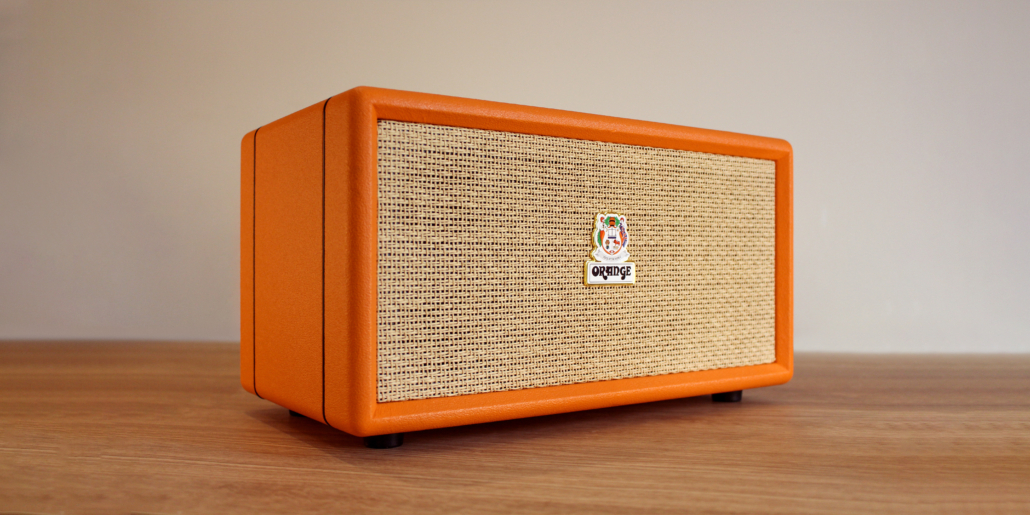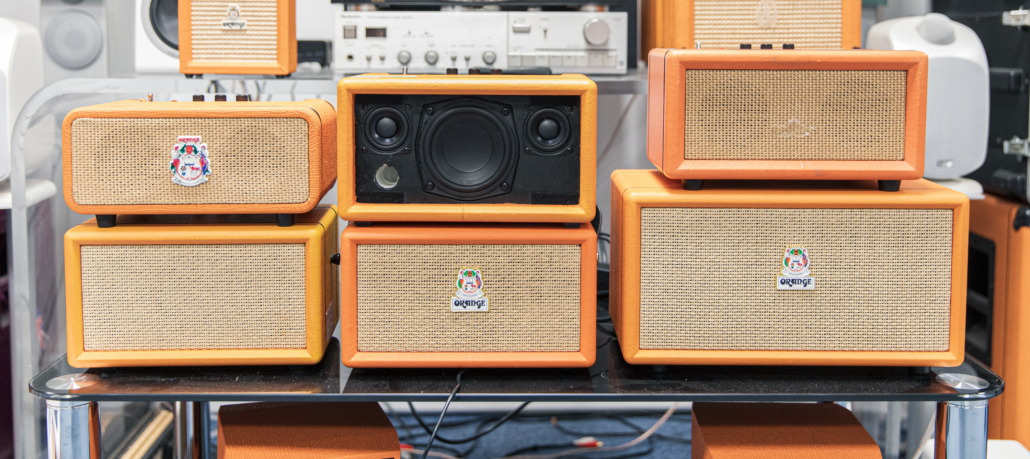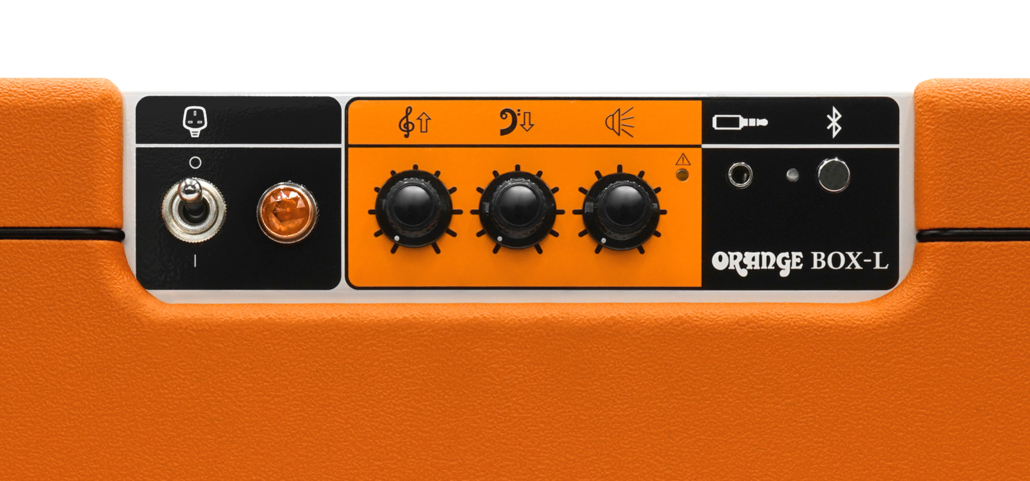The Orange Box and Box-L will be available June 1st 12PM (UK time) direct from orangeamps.com
“One of the biggest things that you learn from 50-odd years of experience,” begins Cliff Cooper, founder and CEO of Orange Amps, “is the ability to listen to something and just say no to a sound—and to keep saying no until you can truthfully say yes.” Although that seems, on the face of it, like a fairly simple requirement, Cooper, who started Orange Amps in 1968 with modest means and an exacting personality, is only too aware of the pratfalls of such pickiness: “But the problem with saying no to a sound or a product is that it costs time and money”, he explains. “Each time, you’ve got to work out why you’re saying no, and go back to the drawing board to fix it—and that’s the difficult part.”
That iterative loop—of listening and tweaking, pouring over schematics and components, then listening again, each time getting slightly closer to that resounding “yes”—has been a pattern played out throughout Orange’s history, and is perhaps the cornerstone of its success, with musicians returning again and again for the past five decades, knowing they’re going to get a piece of equipment that sounds perfect and is built to last.
Today, however, for the first time in the company’s history, Cooper is explaining that development process not in the context of a new guitar amp or effects pedal, but of a product built for both musicians and non-musicians alike: a premium Bluetooth wireless speaker called the Orange Box, which is also an Orange first—specifically, the first consumer-facing product designed entirely in house by Orange’s engineering wizards, from the ground up.
Since the initial blueprints were drawn up back in 2017, Cooper and the team have said “no” to a lot of Orange Box sounds. Now, however, they’ve given it a yes, and the Orange Box is available from tomorrow, starting a new chapter in the history of Orange Amps. Accordingly, this is a story of how over half a century of guitar-amp expertise can be adapted to something more universal; a story of trial, error, patience and success; and a story of what Cooper describes as one of the most important products Orange has ever made.

“When we had the first prototype back for testing,” recalls Cooper of the early days of Orange Box development, “it just wasn’t better than anything else. It was fine—good, even—but it just didn’t stand out, and one of the things Orange has always been proud of is that anything we do has to be better than what’s already out there.
“So that’s why it took so long,” he continues, with a wry smile, knowing not only how six years stretches out in the world of research and development, but also knowing now that the Orange Box really does stand out. And it was clearly time well spent: listening to that initial prototype—then nicknamed the Juicebox—at Orange’s development laboratory is simultaneously a revelatory and lacklustre experience, with test songs of various genres selected for this article to put the unit through its paces sounding tepid and distant. Only Madonna’s ‘Hung Up’ has the faintest flicker of life (Bowie’s ‘Modern Love’ and Led Zep’s ‘Black Dog’ are pale imitations of their true selves), but the reality is that this particular Juicebox contained a far-too-diluted, watery recipe.
The second and third versions fared slightly better. For these, the R&D team experimented with weight-saving neodymium speakers and a more lozenge-shaped form-factor, and as a result, all three songs started to resemble their imperious selves. There was still something off, though—a sort of drab fizziness, like day-old soda water, with strangely scooped mids and muffled bass.
Thankfully, the fix was at hand: “After several prototypes,” explains Cooper, “we decided that the only way to improve the sound was to use active electronic crossovers, which our previous prototypes didn’t have.”
The active crossover in a unit like the Orange Box splits the incoming audio signal in two based on frequency range, with the different signals being sent to different amplifiers specific to those ranges, and then on to appropriate speakers custom-tuned to those frequencies. An active crossover has the advantage of perfectly matching the respective specialist amplifiers and speakers, making sure all parts of the path work together holistically, and each part of the sound is dealt with by the most appropriate equipment. An active crossover also prevents loss of information in the splitting process, meaning that all the audio in your favourite records is retained, all the way to the speakers’ cones.
Getting that split-point right, however, is always the key, and this is where the expertise that Orange technical director Adrian Emsley, amp-design genius and brains behind virtually every Orange product for the past 25 years, shone through: “Frank and I changed the crossover so that just the amp dealing with the bottom end was Class D,” explains Emsley of his work on the Orange Box, alongside colleague and Cambridge academic Frank Cooke. “Then, the two amps dealing with the midrange and treble, on the left and right, were Class AB, which ends up much more musical in the area it needs to be.”
And musicality is exactly the watchword here. Listening again to those same songs on the first Orange Box prototype to implement such a crossover is a lightbulb moment, like a jump from black and white to colour: suddenly, Bowie’s vocals carry genuine anguish and Jimmy Page’s guitar a tangible bite. The arpeggiating synths on ‘Hung Up’, too, sound almost three-dimensional.
“Unlike a different guitar amp company’s wireless speaker, which is only stereo above around 3 or 4 kHz,” continues Emsley, referring to a frequency range in the very highest octave of a concert piano, “our version is stereo above 300 Hz [the middle of the piano], which works especially well with AC/DC-style guitar music, where Angus is on the left and Malcolm is on the right.
“Those other wireless speakers all sound pretty bad with AC/DC,” adds Emsley, ever the rock purist, “which I think is a very poor result.”

“The other thing, of course,” continues Cooper, “is that we use a wooden box. We could have used a plastic cabinet, to make it a bit more cost-effective, but it would have sounded dreadful. Putting the speakers inside a wooden cabinet would sound much better, and we spent a lot of time making sure that the actual wood resonates correctly given the internal volume. If the cabinet resonates at the wrong frequencies, it just doesn’t sound right, you know.”
This level of perfectionism is evident upon examining the works-in-progress: each rejected test model had a different shape and heft, some including holes covered with rubber plugs, others with curved sides. Myriad porting options were clearly investigated, auditioned and tweaked. Every possibility was covered, it appears, before landing on the finished design. Then, finally, Emsley hit on the idea of making the crossover itself interact with its surroundings: “I put a hole in the active crossover at the frequency of the enclosure,” he reveals. “This ‘de-boxed’ the box, if you like, and gave the whole thing a more balanced frequency response.”
In short, it made you want to play these songs again and again, and this repeat playability—that potential for long-term listening—has become an obsession of Cooper’s over the years: “One thing we kept an ear out for when testing was controlling for ‘listening fatigue’, which is when you listen through a product for a long time, and after a while it just doesn’t sound nice,” he explains. Any music lover will recognise the condition, and although exact causes of listener fatigue are still being explored, the latest research suggests that imperceptible sonic artefacts arising from non-musical aspects of a song’s reproduction, such as compression or artificial spatialisation, can cause listeners to lose interest.
“It’s difficult to design an amplifier or a speaker to control for listening fatigue specifically, because there are so many factors to take into account,” confesses Cooper, “but with the Orange Box you really can play it for ages—I have done!—and it doesn’t grate on your ears to the point where you think, I need to turn that thing off.”
A level of product testing this meticulous and drawn out, coupled with a love of making something that’s built to last, feels familiar to Orange’s approach to amplifier and cabinet design. But Cooper wouldn’t have it any other way: “It’s important that any amplifier we bring out is fully researched by us and at the top of its range, and I think everybody in the company accepts that—Adrian in particular is fussy about everything!” he laughs of his colleague for nearly half of Orange’s entire existence. “It not only has to be really good, but it has to be bulletproof, and everything has to be built to last in terms of the components.”

Indeed, product longevity is another characteristic that Cooper and the team have carried from guitar-amp manufacturing over to the Orange Box: in a Bluetooth speaker marketplace saturated with disposable gadgets destined for landfill before the end of the summer festival season, Cooper was insistent that the Orange Box had to have premium staying power. That means the rechargeable battery had to be replaceable years from now when it naturally degrades (like all lithium-ion batteries), and all components be made available for replacement well into the next decade, therefore also ensuring that the box was as green as it was Orange.
On top of that, the Orange Box comes with an audio-safety feature from designed to lengthen the lifespan of the product: a tiny circuit between the crossover and the amps continuously monitors the volume of the signal going in, prompting a small LED to light up whenever the speakers are being driven too hard and potentially harming them. “It’s there to tell you when you should back off the volume so you don’t damage it, sure,” acknowledges Cooper, “but it’s also there to improve sound quality, to help you listen without any distortion, which in turn lessens listener fatigue.”
This audio-limiter light is a simple innovation from yesteryear that will keep the Orange Box in its prime for years, but it’s also a dead giveaway of a product designed not with the bottom line in mind, but with a genuine and enduring love for music, and for building tools for spreading that love. After all, no one would ask for such an attentive add-on, but plenty will be grateful once it’s there.
It’s a feeling that sums up Cooper’s attitude, too: “Within the company,” he explains, “there’s an old-fashioned need to do things properly that’s run for 50 years, and if we can put it over to consumers that when they buy something with the Orange brand on it, it’s going to sound good, then that’s an achievement, and I think the Orange Box can do exactly that.
“After all, we don’t have any shareholders or venture capitalists to answer to,” he continues, proudly. “I’m the only shareholder! so any money that we earn goes straight back into developing new products—and I love doing that.”
It’s an approach that’s stood Cooper, and Orange Amps, in excellent stead since the 1960s, with countless iconic guitar amps—and world-famous fans—to show for it. As the company branches out into the middle of the 21st century, and to music connoisseurs, players and non-players alike, it’s also an approach, you sense, that will future-proof it too.

